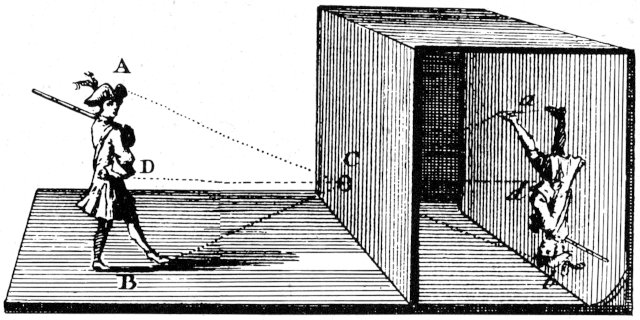
Did Vermeer use a camera to paint his masterpieces?
Did Vermeer use a camera obscura to paint his masterpieces? This is the question that many art historians have asked themselves when observing the precision and realism of the Dutch master's paintings, especially those depicting domestic scenes with characters in their daily activities. In this article we will analyze two of his most famous works: The Lacemaker and The Astronomer, which are currently in the Louvre Museum in Paris.
Analysis of 'The Lacemaker' and 'The Astronomer'.
The Lacemaker is an oil painting on canvas, mounted on wood, measuring 23.9 cm high and 20.5 cm wide. It is estimated to have been painted around 1669 - 1670, when Vermeer was at the height of his artistic maturity. The work depicts a young woman engaged in lace making, hunched over her work, with a concentrated gaze and skilled hands. The theme of the lace-maker was common in Dutch literature and painting, as a symbol of feminine domestic virtues and of the patience and care required for this work. Vermeer emphasizes the lace-maker's total concentration on her work through her forced posture and the lemon yellow of her clothing, an active and psychologically intense color. Even her hairstyle represents in part her physical and psychic state, for it is firmly pinned but at the same time flowing in her ringlets.

*The Lacemaker, Vermeer, Louvre Museum.
The Astronomer is another oil painting on canvas, measuring 51 cm × 45 cm. It was painted around 1668, and is thought to be part of a diptych with The Geographer, another similar work depicting the same character. Some have suggested that it is of the scientist Anton van Leeuwenhoek, a Delft-based friend of the painter. The character's profession is symbolized by the celestial globe (modeled after Jodocus Hondius) and the book on the table, entitled Institutiones Astronomicae Geographicae (or Manual of Metius), opened in chapter III, a section in which the astronomer seeks inspiration from God. Finally, the painting on the wall evokes the discovery of Moses, a representation of knowledge and science.
Vermeer and the camera obscura.
These two works have in common the use of light and shadow, detail and perspective, which make the figures seem three-dimensional and real. Some experts have hypothesized that Vermeer used a camera obscura to create his paintings. This was an invention that consisted of a box with a small hole through which light entered and projected an inverted image of an exterior scene onto a wall or paper inside the box. The camera obscura allowed lighting effects and proportions to be captured more accurately than the human eye. It has been suggested that Vermeer may have used this device as an aid to drawing his sketches or to directly copy the images projected onto the canvas.

*The Astronomer, Vermeer, Louvre Museum.
However, this theory is not without its problems and controversies. On the one hand, there is no documentary or material evidence that Vermeer used a camera obscura or had access to one. On the other hand, there are aspects of his paintings that do not correspond to what would be seen through a camera obscura, such as color differences or optical effects. In addition, it has been argued that Vermeer had a great mastery of painting technique and a deep knowledge of geometry and optics, which allowed him to create his works without the need to resort to any artificial instrument. Finally, it has been pointed out that the use of a camera obscura does not detract from Vermeer's artistic genius, but rather demonstrates his curiosity and innovation.
In conclusion, The Lacemaker and The Astronomer are two examples of Vermeer's mastery in depicting everyday life with striking light and perspective. The question of whether or not he used a camera obscura to paint his works remains an open and fascinating debate, inviting us to look at his paintings with more attention and admiration.
If you would like to know more about the works exhibited at the Louvre Museum and, above all, information about the greatest works of art housed at the Louvre Museum in Paris, we recommend "The Louvre Art Guide"
